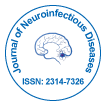开放获取期刊获得更多读者和引用
700 种期刊 和 15,000,000 名读者 每份期刊 获得 25,000 多名读者
索引于
- 哥白尼索引
- 谷歌学术
- 打开 J 门
- 参考搜索
- 哈姆达大学
- 亚利桑那州EBSCO
- OCLC-世界猫
- 出租车直达
- 普布隆斯
- 日内瓦医学教育与研究基金会
- ICMJE
有用的链接
开放获取期刊
分享此页面
抽象的
Viral Infection Effect in Human Body
Ghadri wiley
The spread of a hazardous virus within the body is known as a viral infection. The symptoms of the viral infection are caused by tissue damage and the host's immunological response. Virus infections come in a variety of shapes and sizes. Viruses that infect the lungs: The nose, lungs, and airway are all affected by respiratory virus infections. When a virus is active, it generates copies of itself and bursts (kills) the host cell to release the freshly created virus particles. Virus particles may also "bud" off the host cell over time before killing it. New virus particles are then free to infect more cells in any case. The symptoms of the viral infection appear as a result of cell damage and tissue destruction.

 English
English  Spanish
Spanish  Russian
Russian  German
German  French
French  Japanese
Japanese  Portuguese
Portuguese  Hindi
Hindi